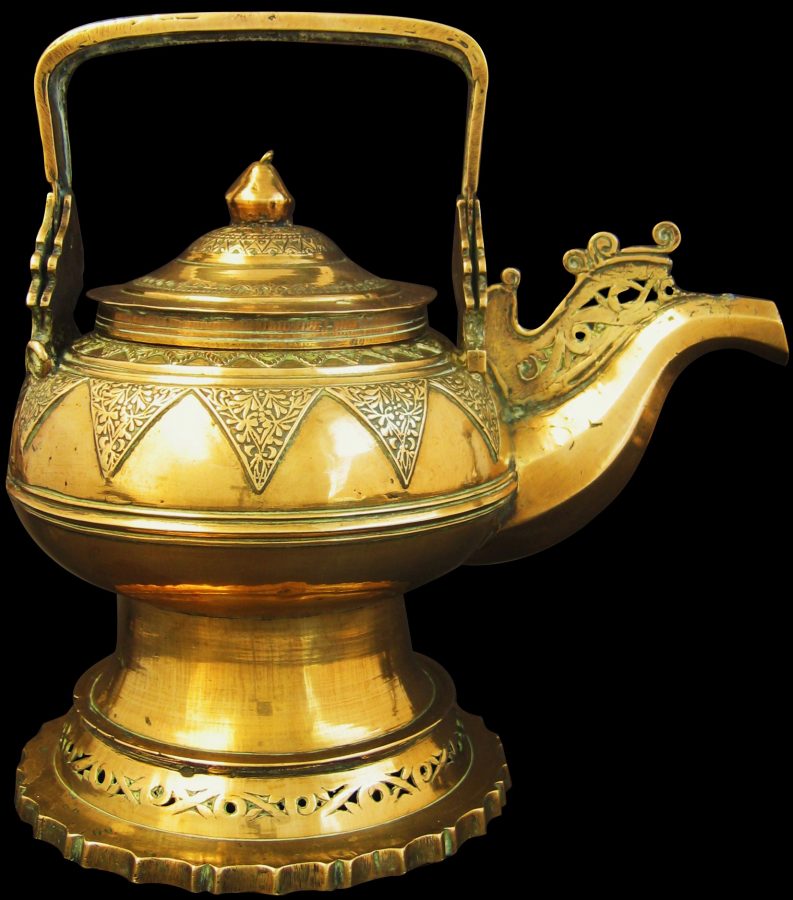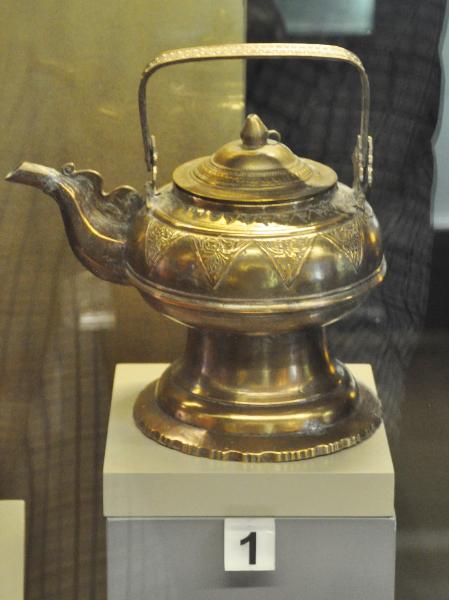This kettle or kendi would have been used by the Malay nobility and the well-to-do. It is likely that such kettles were produced in Sumatra by Minangkabau brass casters and traded to the Malay Peninsula particularly to the Negri Sembilan region, to where large numbers of Minangkabau people had migrated.
It was cast using the lost wax process, stands on a tall, splayed open-work base, and is decorated with bands of stylised triangular bamboo shoot (pucuk rebung) motifs, these being identifying characteristics of Malay brassware but which are also commonly used in Malay textile design and woodwork.
It has a prominent spout with an open-work scrolling fringe (some probable loss), a heavy gauge handle and a cover topped with a lotus-bud finial that sits over, rather than in, the well of the kettle.
Malays did not use eating implements but ate with their right hands only. This type of kettle was used not for tea or coffee but to store cold water that was used to wash the right hand after eating. The left hand was used to hold the kettle by the handle and the kettle was then tipped to pour water over the right hand, the water splashing into a basin or onto the ground if eating outside. Sometimes such kendis would hold delicately-scented rosewater. Such kettle were also used to dispense drinking water.
In the past, Malays tended to eat sitting on the floor or ground, so the kettle is designed to stand on the floor, hence its sizeable and solid base to give it elevation.
The example here has a superb patina.
The final image shows a related example on display in Malaysia’s National Museum (photographed February 2017).



